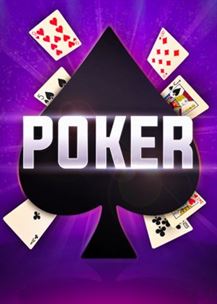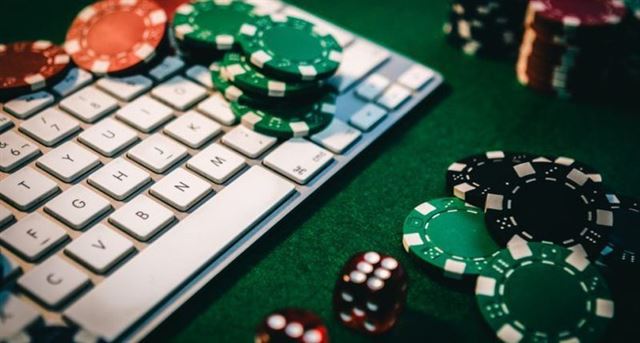Poker is a popular card game that combines skill, strategy, and a bit of luck. While many players rely on their instincts and reading opponents, understanding the principles of probability can give you a significant advantage at the poker table. By utilizing mathematical concepts, players can make more informed decisions, calculate odds, and ultimately increase their chances of winning. In this article, we will explore how math can provide you with an edge in the game of poker.
The Role of Probability in Poker: How Understanding Math Can Improve Your Game
Probability is the branch of mathematics that deals with the likelihood of events occurring. In poker, understanding probability allows you to calculate the odds of certain outcomes and make decisions based on those calculations. For example, if you know the probability of getting a certain card, you can determine whether it is worth staying in the hand or folding.
One of the most fundamental concepts in poker probability is the concept of outs. An out is any card that can improve your hand and potentially lead to a winning combination. By counting your outs, you can calculate the probability of hitting one of those cards on the next street. This information can help you decide whether to continue betting or fold.
Calculating outs is relatively straightforward. Let’s say you have a flush draw, meaning you have four cards of the same suit and need one more to complete the flush. There are 13 cards of each suit in a standard deck, and you already have four, so there are nine remaining cards of that suit that can complete your flush. Therefore, you have nine outs.
Once you know your outs, you can use them to calculate your odds of hitting your hand. To do this, you divide the number of outs by the number of unseen cards. In our example, there are 52 cards in a deck, and you have seen four (your two hole cards and the three community cards). This means there are 47 unseen cards. Dividing nine by 47 gives you approximately a 19% chance of hitting your flush on the next card.
Understanding these probabilities can help you make more informed decisions at the poker table. If the pot odds, which represent the ratio of the current pot size to the cost of a contemplated call, are higher than your odds of hitting your hand, it may be profitable to continue betting. On the other hand, if the pot odds are lower than your odds of hitting your hand, it may be more prudent to fold.
Probability also plays a crucial role in understanding expected value (EV) in poker. EV is a measure of the average amount of money you can expect to win or lose on a particular play over the long run. By calculating the EV of different actions, you can determine which decision is the most profitable in the long term.
To calculate EV, you multiply the probability of each possible outcome by the amount of money you stand to win or lose in that scenario. For example, if you have a 50% chance of winning $100 and a 50% chance of losing $50, your EV would be (0.5 * $100) + (0.5 * -$50) = $25. A positive EV indicates a profitable play, while a negative EV suggests a losing play.
Calculating Odds in Poker: Using Probability to Make Informed Decisions
In poker, odds refer to the likelihood of a certain event occurring. This could be the probability of getting a specific hand, the chances of hitting a certain card on the flop, or the likelihood of winning a hand based on the cards you hold. Understanding these odds allows players to make calculated decisions that maximize their chances of winning.
To calculate odds in poker, players need to have a basic understanding of probability. Probability is a branch of mathematics that deals with the likelihood of events occurring. It is expressed as a number between 0 and 1, with 0 representing an impossible event and 1 representing a certain event.
In poker, probability is used to determine the likelihood of certain hands being dealt. For example, the probability of being dealt a pair of aces is approximately 0.0045, or 0.45%. This means that out of every 221 hands, you can expect to be dealt a pair of aces once. Understanding these probabilities allows players to assess the strength of their starting hand and make informed decisions about whether to bet, raise, or fold.
Calculating odds in poker also involves understanding the concept of outs. Outs are the cards that can improve your hand and potentially give you the winning hand. For example, if you have a flush draw, meaning you have four cards of the same suit and need one more to complete the flush, there are nine remaining cards of that suit in the deck. These nine cards are your outs.
To calculate the odds of hitting your flush, you can use the concept of expected value. Expected value is a mathematical concept that represents the average outcome of a situation over the long run. In poker, it is used to determine whether a particular decision is likely to be profitable or not.
To calculate the expected value of hitting your flush, you multiply the number of outs by the probability of hitting one of those outs on the next card. In this case, you have nine outs, and there are 47 unknown cards left in the deck. Therefore, the probability of hitting your flush on the next card is approximately 0.19, or 19%.
By multiplying the number of outs (9) by the probability of hitting one of those outs (0.19), you get an expected value of 1.71. This means that, on average, you can expect to win 1.71 times your bet every time you have a flush draw. If the pot odds, which represent the ratio of the current pot size to the cost of your bet, are higher than the expected value, it is a profitable decision to call or raise.
Poker and Probability: How to Use Statistics to Gain an Edge at the Table
To calculate the probability of getting a specific hand, you need to know the number of possible outcomes and the number of favorable outcomes. For example, if you want to know the probability of getting a flush (five cards of the same suit), you need to know the number of ways you can get a flush and the total number of possible hands.
There are 13 different ranks of cards (Ace, 2, 3, 4, 5, 6, 7, 8, 9, 10, Jack, Queen, King) and four suits (hearts, diamonds, clubs, spades). Therefore, there are 52 possible cards in a deck. To calculate the number of ways you can get a flush, you need to consider that there are 13 cards of each suit. So, there are 13 possible cards that can make up a flush. Since you need five cards for a flush, the number of ways you can get a flush is calculated as 13 choose 5, which is equal to 1,287.
The total number of possible hands is calculated as 52 choose 5, which is equal to 2,598,960. Therefore, the probability of getting a flush is 1,287 divided by 2,598,960, which is approximately 0.0495 or 4.95%.
Understanding the probability of getting certain hands can help you make informed decisions at the poker table. For example, if you have a flush draw (four cards of the same suit), you can calculate the probability of hitting your flush on the next card. If the pot odds (the ratio of the current pot size to the cost of a contemplated call) are greater than the probability of hitting your flush, it may be a profitable decision to call.
Another important concept in poker is expected value (EV). Expected value is the average amount of money you can expect to win or lose in a specific situation. To calculate the expected value, you need to consider the probability of each possible outcome and the amount of money you can win or lose in each outcome.
For example, let’s say you have a pair of Aces and your opponent has a pair of Kings. The probability of winning the hand is approximately 82%. If the pot size is $100, your expected value is calculated as 82% of $100, which is $82. Therefore, in the long run, you can expect to win $82 on average in this situation.
Understanding expected value can help you make profitable decisions at the poker table. If the expected value of a certain action is positive, it means that, in the long run, you can expect to make money by taking that action.
The Mathematics Behind Poker: How Probability Can Help You Win
One of the most fundamental concepts in poker is the concept of outs. An out is any card that can improve a player’s hand. For example, if a player has four cards to a flush, there are nine remaining cards of that suit in the deck. Therefore, the player has nine outs to complete their flush. By calculating the number of outs a player has, they can determine the probability of improving their hand and make decisions accordingly.
Calculating the probability of improving a hand is relatively straightforward. To calculate the probability of hitting a specific card on the next street, a player can use the rule of four and two. This rule states that a player can multiply their number of outs by four to get an approximate percentage of hitting their card on the next street. If a player has nine outs, they have approximately a 36% chance of hitting their card.
However, it is important to note that this calculation is not exact. It is an approximation that assumes the player will see both the turn and the river. If a player only has one street left to see, they can use the rule of two instead. This rule states that a player can multiply their number of outs by two to get an approximate percentage of hitting their card on the next street. Using the same example, if a player has nine outs and only one street left to see, they have approximately an 18% chance of hitting their card.
Understanding the probability of improving a hand is just one aspect of using math to gain an edge in poker. Another important concept is pot odds. Pot odds refer to the ratio of the current size of the pot to the cost of a contemplated call. By comparing the pot odds to the odds of completing a hand, a player can determine whether or not it is profitable to make a call.
For example, if the pot is $100 and a player needs to call $20 to see the next card, their pot odds are 5 to 1. If the player has a 20% chance of hitting their card, their odds are 4 to 1. In this scenario, the pot odds are higher than the odds of completing the hand, making it a profitable call.
Enhancing Your Poker Skills with Probability: Strategies for Success at the Table
One of the fundamental concepts in poker probability is the concept of outs. An out is any card that can improve a player’s hand. For example, if a player has four cards to a flush, there are nine remaining cards of that suit in the deck. Therefore, the player has nine outs to complete their flush. By calculating the probability of hitting one of these outs, a player can determine whether or not it is profitable to continue in a hand.
Calculating probabilities in poker can be done using simple math and a basic understanding of the deck. For example, if a player has two cards of the same rank, there are three remaining cards of that rank in the deck. Therefore, the player has a 3 in 47 chance of hitting a third card of that rank on the next card dealt. This can be expressed as a percentage, which in this case would be approximately 6.38%.
Understanding the probabilities of different hands and scenarios can also help players make better decisions about their betting strategy. For example, if a player has a strong hand and calculates that their opponent has a 20% chance of hitting a winning hand on the next card, they may choose to bet aggressively to try to force their opponent to fold. On the other hand, if a player has a weak hand and calculates that their opponent has a 70% chance of hitting a winning hand on the next card, they may choose to fold and cut their losses.
In addition to calculating probabilities, players can also use probability to analyze their opponents’ behavior and make more accurate reads. By observing how often an opponent bets, raises, or folds in certain situations, a player can make educated guesses about the strength of their opponent’s hand. For example, if an opponent frequently bets when they have a strong hand, a player can use this information to make better decisions about whether or not to call or fold.
In conclusion, understanding probability is a crucial skill for any serious poker player. By calculating the probabilities of different hands and scenarios, players can make more informed decisions about when to bet, raise, or fold. Probability can also be used to analyze opponents’ behavior and make more accurate reads. While luck may play a role in the short term, it is the skill and strategy that ultimately determine long-term success at the poker table. So, if you want to gain an edge over your opponents, take the time to study and understand the math behind the game.




